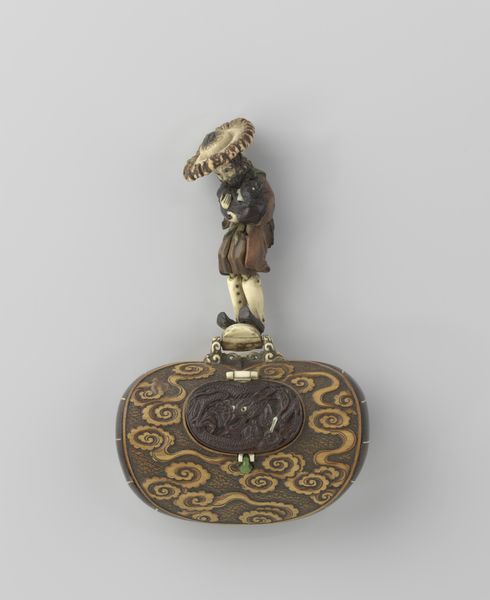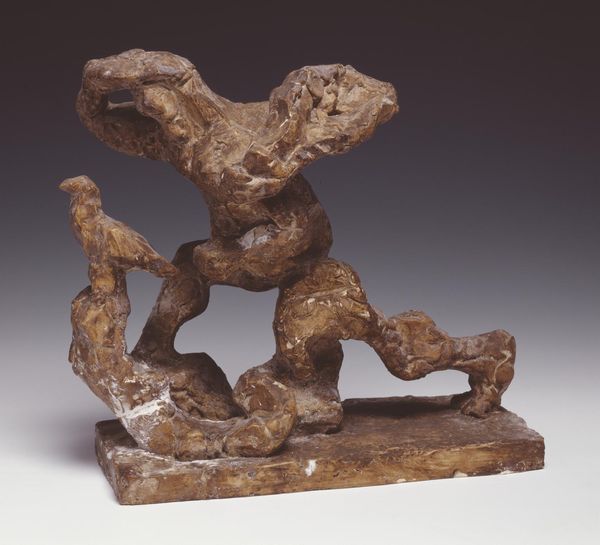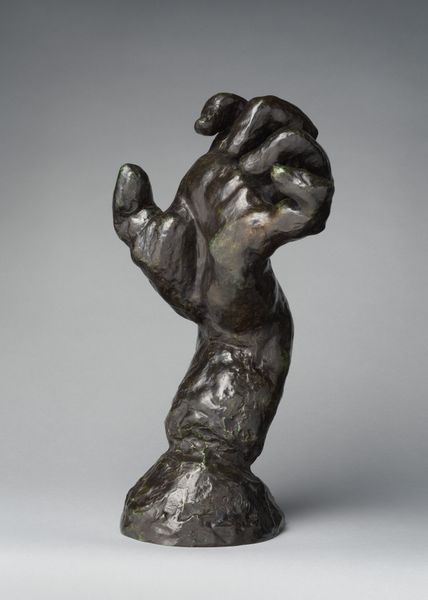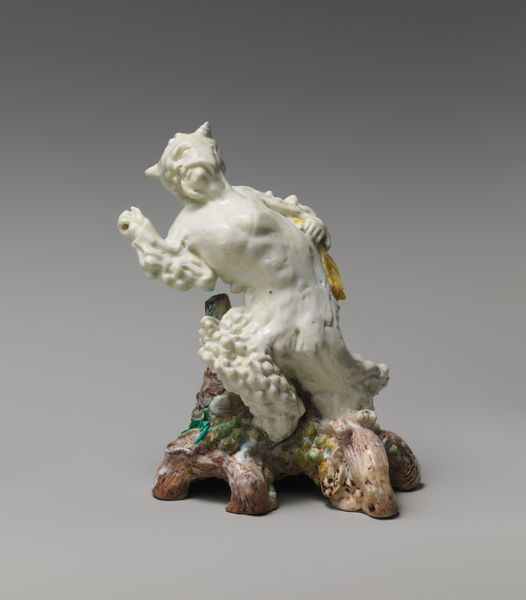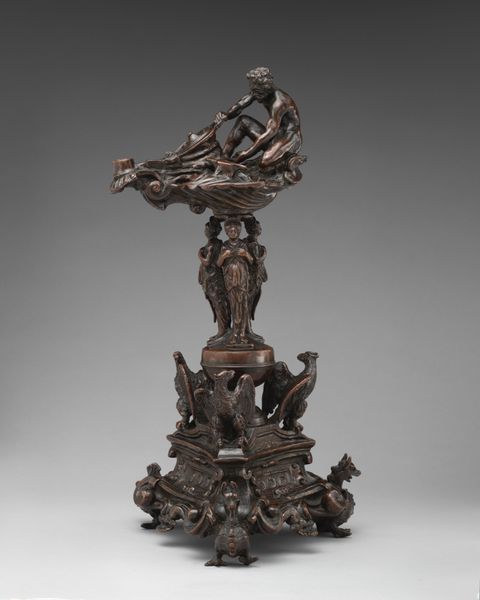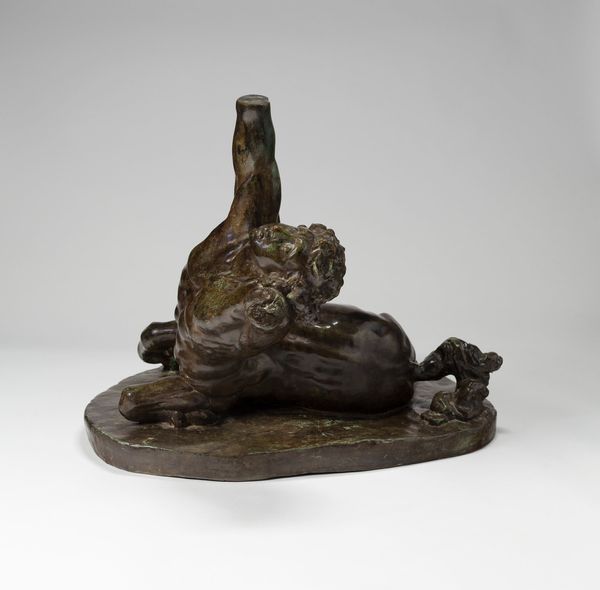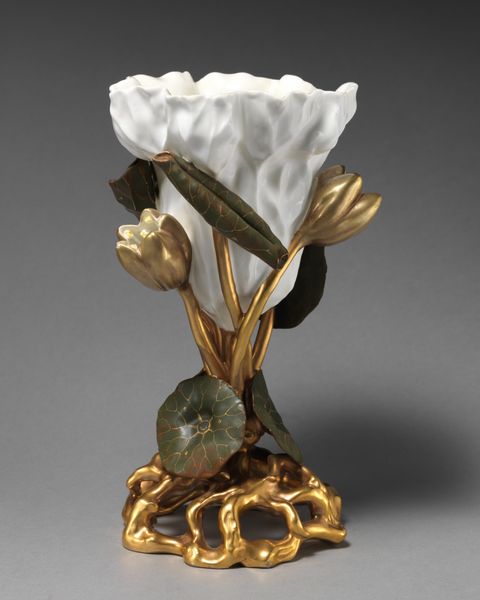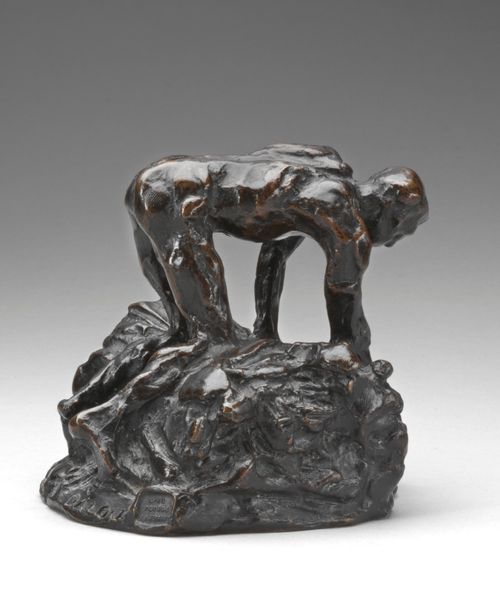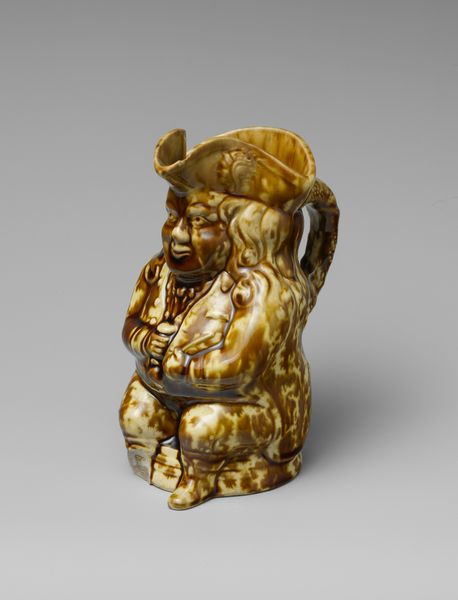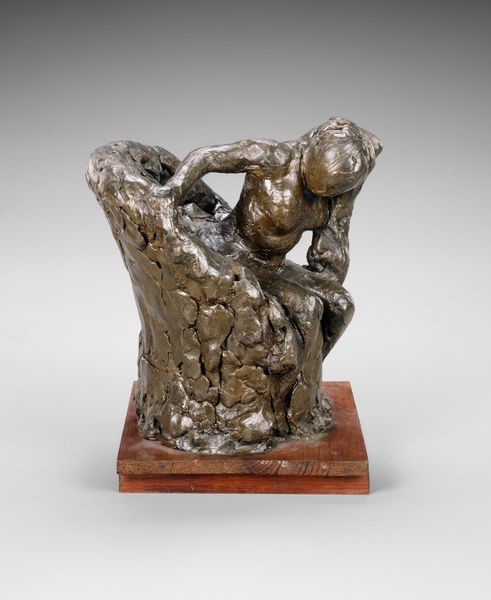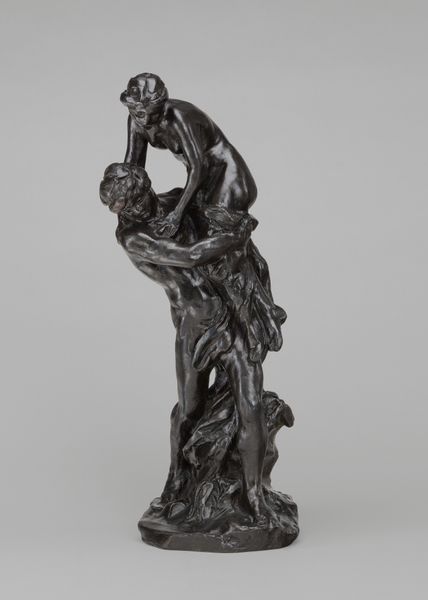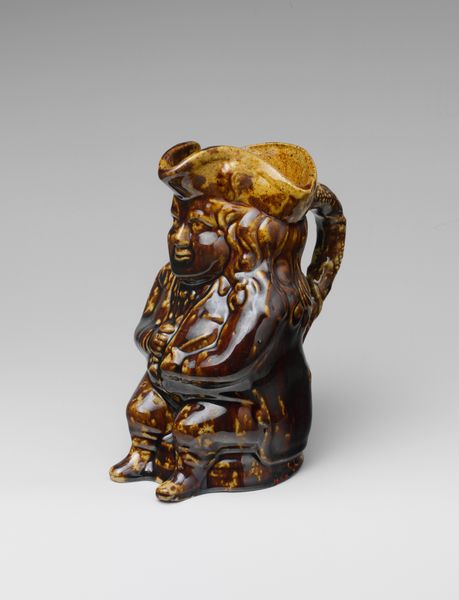
Triton with shell serving as saltcellar 1650 - 1675
0:00
0:00
bronze, sculpture
#
allegory
#
baroque
#
bronze
#
figuration
#
sculpture
#
decorative-art
#
nude
Dimensions: Overall (confirmed): 5 1/16 × 4 7/8 × 4 7/16 in. (12.9 × 12.4 × 11.3 cm)
Copyright: Public Domain
Editor: So, this bronze sculpture, “Triton with shell serving as saltcellar,” by Gian Lorenzo Bernini, created sometime between 1650 and 1675, strikes me as opulent. I’m curious how a piece like this functions in its historical moment. What am I missing? Curator: Think about the baroque period, the theatricality, the emphasis on drama and movement. Bernini wasn't just making pretty things. He was crafting objects imbued with power and social significance. Now, consider this isn't just a sculpture, it's a *saltcellar*. Editor: So, it's functional. Curator: Precisely! Serving salt was a ritual, a demonstration of wealth and status. By elevating a common object into art, what kind of social statement is being made? Is it inclusive or exclusive? Editor: I guess exclusive. Who can afford Bernini on their dinner table? It's performative consumption. Displaying wealth through art used daily… it's almost like a constant reminder of the owner’s position. Curator: Exactly. And Triton himself—son of Poseidon—was he a neutral figure? How does his inclusion further reinforce ideas about class, power and cultural values? What existing narratives is Bernini pulling from? Editor: Okay, I get it. It is more than decorativeness. By displaying this sculptural saltcellar the elite were signaling their association with power and mythological narratives, solidifying their status through conspicuous display and symbolic associations. It makes me wonder about the messages embedded within seemingly innocuous everyday objects. Curator: Absolutely. And examining such a saltcellar highlights art's active role within complex historical networks of class, cultural narratives, and the subtle yet powerful political functions of imagery.
Comments
No comments
Be the first to comment and join the conversation on the ultimate creative platform.

